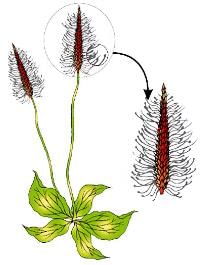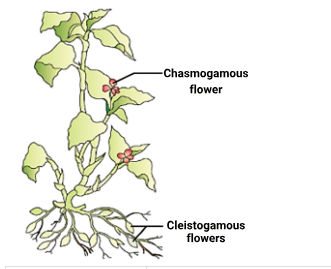Test: Pollination - NEET MCQ
15 Questions MCQ Test - Test: Pollination
The plant shown in the given diagram is most likely to be pollinated by:


The diagram of NCERT given below shows two types of flowers in a certain plant:

Statement I:Cleistogamous flowers have an advantage and a disadvantage over chasmogamous flowers.
Statement II:Seed set is assured even in the absence of pollinators but the amount of genetic variations is less in cleistogamous flowers when compared to the chasmogamous flowers.

From among the situations given below, choose the one that prevents both autogamy and geitonogamy.
What is emasculation, and why is it necessary in artificial hybridization?
Which of the following is/are not marine plant pollinated by water?
When pollen is transferred from the anther of one flower to the stigma of another flower of the same plant, pollination is referred to:
The type of pollination that brings genetically different types of pollen grains to the stigma of a plant is
Wind-pollinated flowers are characterized by the following, except
What are the three types of pollination based on the source of pollen?



















